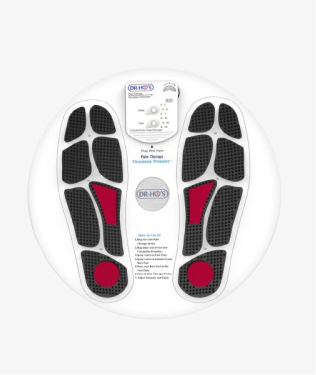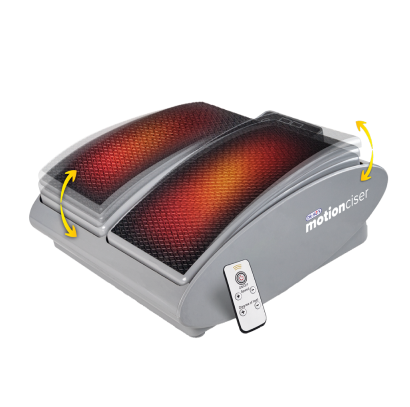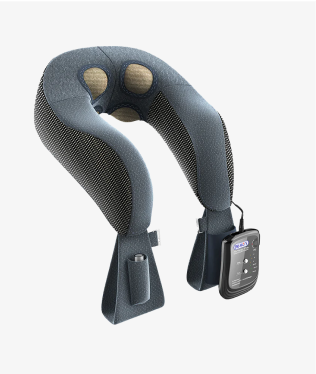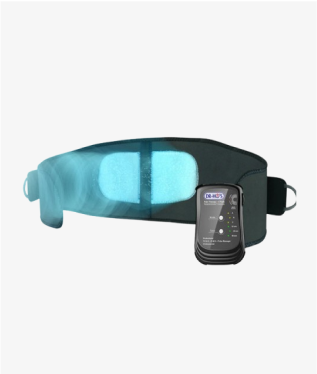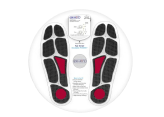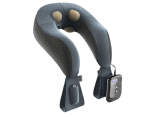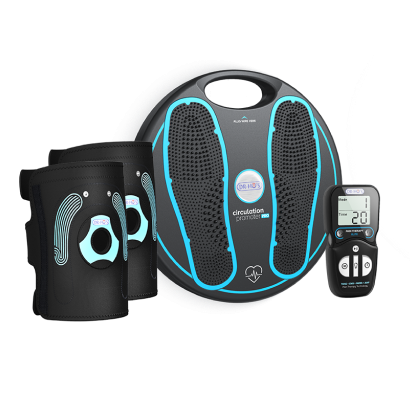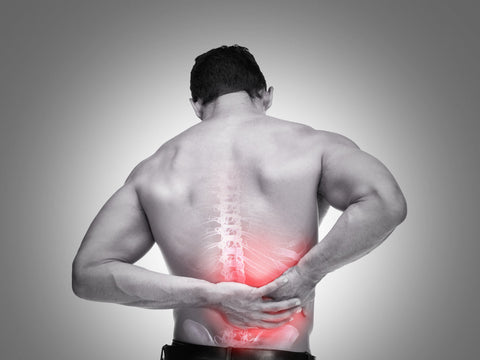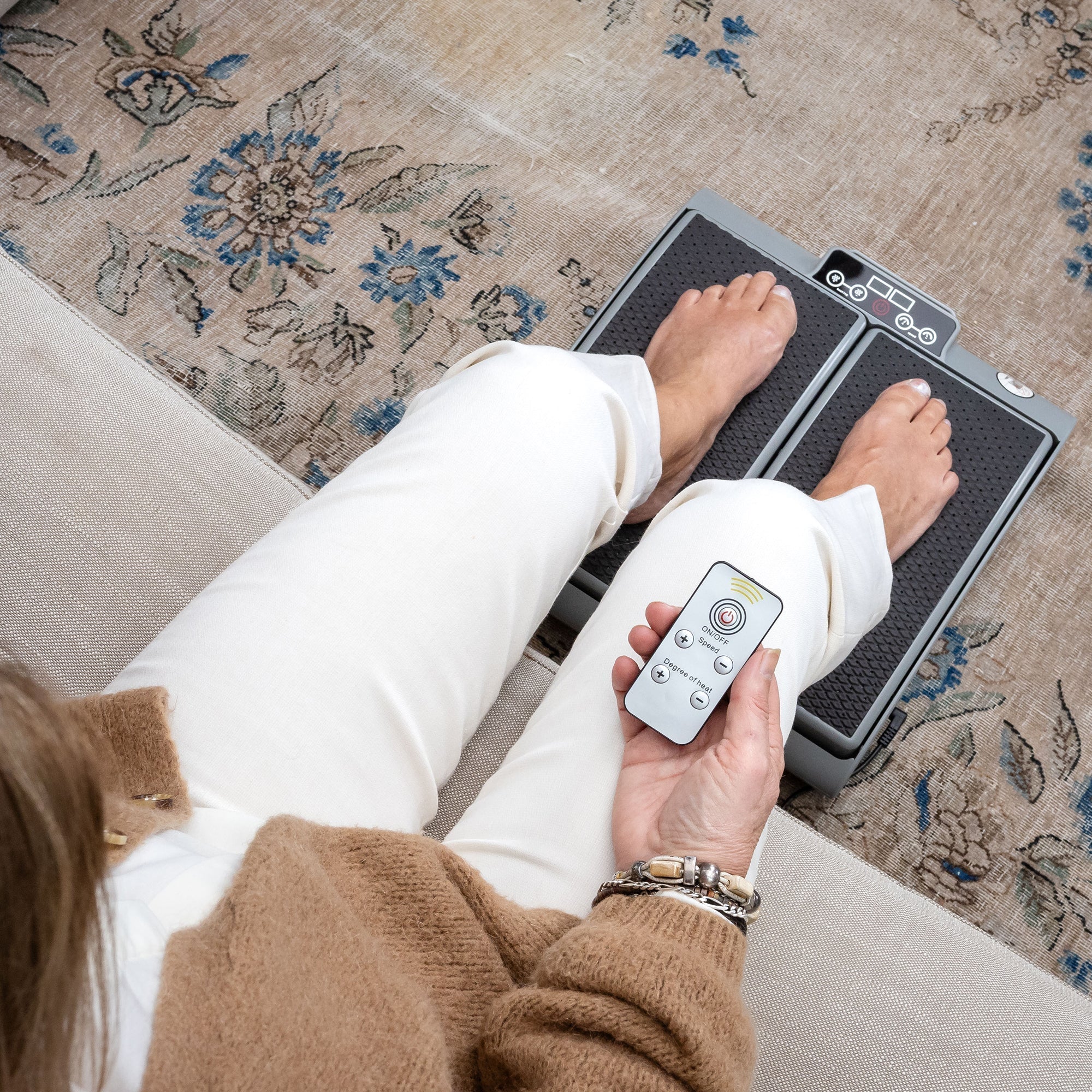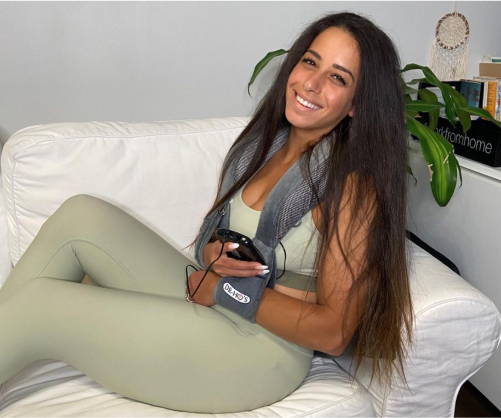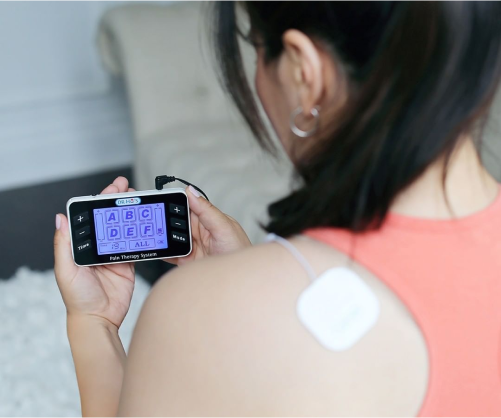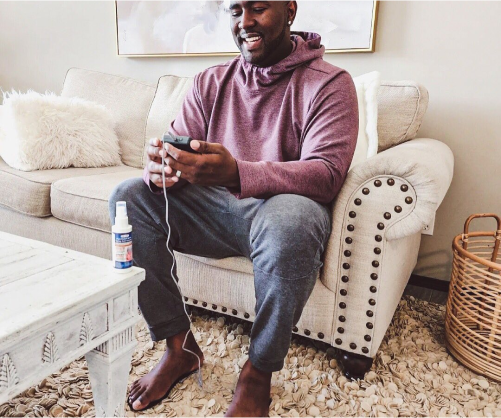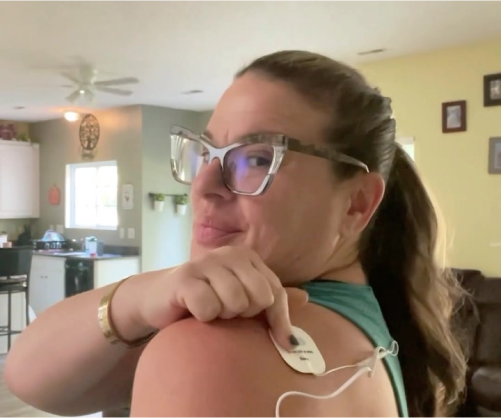Living with degenerative disc disease (DDD) can be challenging. The persistent pain and limited mobility often impact daily activities, making even simple tasks difficult. If you're searching for effective pain management options, you may be weighing a TENS machine against other therapies and solutions. We get it: You don’t want an expensive device gathering dust in a cupboard after disappointing results.
However, the answer is very encouraging. While TENS (Transcutaneous Electrical Nerve Stimulation) therapy isn't a cure for degenerative disc disease, clinical evidence suggests it can provide significant temporary pain relief and improved function for many patients. This article explores how advanced TENS technology, particularly DR-HO'S innovative systems, can help manage the discomfort associated with degenerative disc disease.
Understanding degenerative disc disease (DDD)
Degenerative disc disease is a condition that occurs when the cushioning discs between your vertebrae begin to break down. This natural aging process can lead to:
-
Pain in the affected area (commonly chronic low back pain or neck pain)
-
Inflammation around the disc and surrounding tissues
-
Muscle tension and spasms
-
Nerve pressure causing radiating pain
-
Limited mobility and function

How common is degenerative disc disease?
Degenerative disc disease is remarkably common, often occurring as a natural part of aging:
-
For individuals under 50, the prevalence is 71% in men and 77% in women (Osteoarthritis Cartilage)
-
By age 50, approximately 80% of people have disc degeneration visible on imaging (American Journal of Neuroradiology)
-
For those over 50, the prevalence exceeds 90% for both men and women (Osteoarthritis Cartilage)
-
Worldwide, an estimated 403 million individuals (5.5% of the global population) are diagnosed with symptomatic disc degeneration annually (Global Spine Journal)
It's important to note that the presence of disc degeneration on imaging does not always correlate with symptoms. Many people with visible disc changes on MRI experience no pain at all, while others may have significant discomfort.
Causes of degenerative disc disease
Degenerative disc disease (DDD) is primarily caused by the natural aging process, but several factors can contribute to its development or exacerbate its progression:
-
Age: As we get older, the discs in our spine naturally lose water and protein content, making them less flexible and more prone to wear and tear.
-
Genetics: A family history of degenerative disc disease can increase susceptibility to the condition.
-
Injuries: Acute or sudden injuries, such as falls or sports-related trauma, can damage the discs and accelerate degeneration.
-
Repetitive stress: Jobs or activities involving repetitive lifting, bending, or twisting can put extra stress on the discs, leading to faster deterioration.
-
Obesity: Excess body weight puts additional pressure on the spine, accelerating disc degeneration.
-
Smoking: Several studies have linked smoking to an increased risk of degenerative disc disease and potentially worsening symptoms.
-
Physical activity: An active lifestyle, particularly involvement in sports or long-term physical activities, can contribute to wear and tear on the discs over time.
-
Dehydration of discs: As discs dry out, they become thinner and less able to absorb shocks, leading to decreased cushioning between vertebrae.
-
Daily activities: Everyday tasks like lifting heavy objects or working in the garden can contribute to disc degeneration over time.
It's important to note that while these factors can increase the risk of developing DDD, the exact reasons why some people experience symptoms while others do not are not fully understood.
Most cases of degenerative disc pain are manageable through a combination of pain management methods, physical therapy, and lifestyle modifications. DR-HO'S advanced pain relief technology can be a valuable component of this multi-faceted approach.
How DR-HO'S pain relief technology works for degenerative disc pain
DR-HO'S pain relief devices utilize advanced stimulation technology to provide relief through two primary mechanisms:
1. Pain signal interruption
When the gentle electrical impulses from a DR-HO'S device are applied to your skin, they stimulate sensory nerves that effectively "close the gate" that allows pain signals to reach your brain. This temporary blocking of pain transmission can provide immediate relief from the discomfort associated with degenerative disc disease.
2. Natural endorphin release
The precisely calibrated stimulation from DR-HO'S therapy also triggers your body to release endorphins—your natural pain-relieving chemicals. These endorphins not only alleviate pain but can also promote a sense of well-being, helping you cope better with chronic conditions like DDD.
A 2010 study (Ortop Traumatol Rehabil) found that electrical stimulation therapy contributed significantly to pain relief and improvement of function and mobility in patients with disc disease in the lumbar spine. The researchers concluded that this type of stimulation "should be more commonly prescribed" as an appropriate and effective technique for managing this condition.
The DR-HO'S advantage: Advanced 4-in-1 technology
While conventional TENS units offer basic pain relief through a single mechanism, DR-HO'S has pioneered a comprehensive solution with our proprietary AMP Technology. This innovative system integrates multiple therapeutic modalities that work synergistically with your body's natural processes:
1. TENS (Transcutaneous Electrical Nerve Stimulation)
At the core of DR-HO'S technology is an advanced TENS system that delivers precisely calibrated electrical impulses. These signals effectively interrupt pain transmission to your brain while simultaneously triggering your body's natural endorphin production. Unlike basic TENS units, DR-HO'S technology utilizes a sophisticated range of frequencies and waveforms specifically optimized for different types of pain.
2. EMS (Electrical Muscle Stimulation)
Muscle tension is a primary contributor to degenerative disc pain. DR-HO'S integrated EMS technology targets this source directly by gently contracting and relaxing the muscles surrounding your spine. This rhythmic action helps release chronic tension, reduce spasms, and gradually restore natural muscle function—addressing a key component of the pain cycle.
3. NMES (Neuromuscular Electrical Stimulation)
DR-HO'S advanced NMES technology takes muscle stimulation to the next level by specifically targeting motor nerves. This specialized stimulation helps re-educate weakened muscles that support your spine, potentially improving stability around affected discs and increase range of motion. The result is not just temporary pain relief, but enhanced muscle function that can contribute to longer-term comfort.
4. Auto-Modulating Pulses
DR-HO’S Auto-Modulating Pulses is a system that automatically varies the electrical parameters throughout your treatment session, creating a dynamic therapeutic experience. This continual modulation helps maintain effectiveness throughout each session.
This integrated 4-in-1 approach represents a significant advancement in non-invasive, drug-free pain management. Rather than addressing just one aspect of pain, DR-HO'S technology works holistically to provide comprehensive relief. The scientifically calibrated waves and frequencies help optimize nerve stimulation while simultaneously increasing local circulation to the treated area, creating a multi-dimensional approach to managing degenerative disc discomfort.
Practical application: Using DR-HO'S for degenerative disc disease
DR-HO'S innovative pain relief devices are specifically designed to be easy to use at home while delivering professional-grade relief. Our proprietary 4-in-1 technology targets the multiple dimensions of degenerative disc pain through scientifically calibrated stimulation patterns. Here's how to get the most effective relief from your DR-HO'S device:
Electrode placement for the neck
To relieve pain in the shoulders, use four smaller pads total:
-
Place two pads at the base of the neck
-
Place two pads on your shoulders
-
Note: For effective treatment, lay on your back with your neck supported by a pillow, neck roll, or rolled-up towel

Electrode placement for lower back pain
Lower back pain is a widespread health issue affecting millions of people globally. Indeed, in 2020, an estimated 619 million people (10% of the global population) worldwide experienced low back pain (The Lancet).

To help relieve lower back pain with your DR-HO'S device, opt for two large pads and place them as follows: Place the pads vertically and parallel to each other, on either side of the spine.
Notes:
-
Leave at least a one-inch gap between the two pads
-
Do not place the pads directly on your spine
This placement ensures optimal stimulation of the affected area while maintaining safety. The strategic positioning helps target the muscles supporting your spine and the nerves transmitting pain signals.
DR-HO'S devices offer multiple pre-programmed modes that offer a variety of massage-like sensations, catering to individual preferences for a personalized pain relief experience.
Start with a lower intensity setting and gradually increase to a comfortable level where you can feel the stimulation without discomfort. Most users find that 20-30-minute sessions provide optimal relief.
Complementary approaches for maximum benefit
Pain is a deeply personal experience that varies significantly from one individual to another. What works well for one person with degenerative disc disease may not provide the same relief for someone else. Finding the right treatment approach often involves trying different methods or combinations of therapies until you discover what works best for your unique situation.
DR-HO'S advanced pain relief technology serves as an excellent foundation for a comprehensive pain management strategy. Our proprietary 4-in-1 system works in harmony with many other therapeutic approaches, potentially enhancing their effectiveness while addressing multiple aspects of pain simultaneously. Here's how you can complement your DR-HO'S therapy for optimal results:
Other non-invasive treatments
-
Physical therapy: Strengthening exercises for the back, neck, and core muscles may be recommended by a physical therapist to help improve posture, increase mobility, and reduce pain. Using TENS therapy before physical therapy sessions can help reduce pain, making exercises more effective and comfortable.
-
Heat and cold therapy: Cold packs can decrease pain, while heat packs can reduce inflammation associated with damaged discs. Alternating between DR-HO'S stimulation therapy and heat applications can create a synergistic effect for enhanced pain relief.
-
Acupuncture: This technique may stimulate healing by increasing blood flow and prompting the body to release natural pain relievers. The neural pathways activated by acupuncture can complement those targeted by DR-HO'S advanced stimulation technology.
-
Medications (with doctor supervision):
-
Over-the-counter pain relievers like acetaminophen and NSAIDs (e.g., ibuprofen) can help manage pain and inflammation.
-
Prescription pain medications may be considered if OTC options are ineffective.
Disclaimer: This content is for informational purposes, and should not be treated as medical advice. While our advanced TENS machine can benefit various pain conditions through its sophisticated combination of TENS, EMS, and NMES guided by our proprietary AMP Technology, proper diagnosis ensures optimal pad placement and treatment protocols. Always consult a healthcare professional for an accurate diagnosis before beginning any treatment program.
Lifestyle modifications
-
Exercise: Low-impact activities like swimming, walking, yoga, or Pilates can help strengthen core muscles and improve overall spinal health. Using your DR-HO'S device before exercise can help reduce pain barriers to physical activity.
-
Proper lifting techniques: Learning to lift objects correctly under guidance can help prevent further damage to compromised discs.
-
Posture improvement: Maintaining good posture throughout the day reduces stress on the spine and may alleviate symptoms. Consider ergonomic furniture and regular posture checks.
-
Hydration and nutrition: Staying well-hydrated helps maintain disc health, while an anti-inflammatory diet may reduce pain associated with degenerative disc disease
By integrating DR-HO'S advanced pain relief technology with these complementary approaches, you can develop a personalized strategy that addresses multiple aspects of degenerative disc pain. Remember that patience and consistency are key—finding the right combination of treatments takes time, but the improvement in your quality of life is worth the effort. Always consult a healthcare professional before starting any new exercise program.
Setting Realistic Expectations
It's important to understand that while DR-HO'S advanced TENS technology can provide significant temporary relief from the pain associated with degenerative disc disease, it is not a cure for the underlying condition. The technology works by:
-
Interrupting pain signals
-
Releasing natural pain-relieving chemicals
-
Relaxing tense muscles
-
Increasing local circulation
-
Increasing range of motion
Regular use of your DR-HO'S device can be an effective component of your overall pain management strategy, helping you maintain activity levels while living with degenerative disc disease.
When to consult a healthcare provider
While many people with degenerative disc disease can effectively manage their symptoms with DR-HO'S advanced pain relief technology and complementary approaches, certain situations warrant medical attention. Understanding when to see a healthcare professional is crucial for proper management of your condition.
Contact a healthcare provider immediately if you experience:
-
Loss of bowel or bladder control: This could indicate serious nerve compression and requires emergency evaluation
-
Leg weakness or difficulty walking: Progressive weakness may signal nerve damage
-
Numbness or tingling in your legs: Persistent sensory changes suggest nerve involvement
-
Foot drop (inability to raise your foot at the ankle): This indicates significant nerve compression
See a doctor when:
-
Chronic back pain interferes with daily activities: When discomfort limits your normal functions despite using DR-HO'S pain relief therapy
-
You experience recurring bouts of severe discomfort: Especially if pain intensity increases over time
-
Pain worsens during specific movements: Such as bending, lifting, or twisting, even after consistent use of your DR-HO'S device
-
You have persistent pain in your lower back, buttocks, thighs, or neck: Particularly if it radiates down the legs
-
Pain wakes you from sleep or is worse at night: This pattern may indicate a need for medical evaluation
-
You experience unexplained weight loss with your back pain: This combination requires further investigation
-
Symptoms persist beyond 4-6 weeks: Despite consistent use of DR-HO'S therapy and other self-care measures
For some patients with more severe symptoms, healthcare providers may recommend minimally invasive interventions, such as epidural corticosteroid injections, to reduce inflammation and provide temporary relief. These procedures may be considered when non-invasive approaches like DR-HO'S advanced pain relief technology and lifestyle modifications haven't provided sufficient relief.
It's important to note that while most people over 40 experience some disc degeneration, not everyone develops symptoms. However, if you do experience persistent or worsening symptoms, consulting a healthcare professional is advisable. They can provide an accurate diagnosis and recommend appropriate treatment options, which may include incorporating DR-HO'S innovative 4-in-1 technology into a comprehensive treatment plan.
Your healthcare provider can help determine the optimal treatment plan that incorporates DR-HO'S proprietary stimulation technology alongside other appropriate interventions for your specific situation, helping you achieve the best possible outcome and quality of life.
Conclusion: Why choose DR-HO'S for degenerative disc relief
Managing degenerative disc disease requires a multifaceted approach, and DR-HO'S advanced pain relief technology offers a non-invasive, drug-free option that specifically addresses the complex pain mechanisms involved in this condition.
Our proprietary 4-in-1 Technology represents a significant advancement beyond standard TENS units. By thoughtfully integrating multiple therapeutic modalities into one system, DR-HO'S has created an easy-to-use device for comprehensive relief. This scientifically developed approach helps provide temporary relief by encouraging optimal nerve and muscle interaction while simultaneously increasing local circulation to the affected area.
The sophisticated auto-modulating pulses continuously adjust throughout your treatment session, preventing adaptation and ensuring consistent effectiveness. This dynamic stimulation pattern helps interrupt pain signals, release tension in supporting muscles, and provide the comprehensive relief that degenerative disc sufferers need.
By incorporating DR-HO'S innovative technology into your pain management routine, alongside appropriate exercise, posture awareness, and lifestyle modifications, you can take a proactive approach to managing degenerative disc pain and maintaining your mobility and independence.
Ready to experience how DR-HO'S advanced technology can help manage your degenerative disc pain? Explore our range of innovative pain relief solutions and take the first step toward more comfortable days.
Disclaimer: This content is for informational purposes, and should not be treated as medical advice. While our advanced TENS machine can benefit various pain conditions through its sophisticated combination of TENS, EMS, and NMES guided by our proprietary AMP Technology, proper diagnosis ensures optimal pad placement and treatment protocols. Always consult a healthcare professional for an accurate diagnosis before beginning any treatment program.


